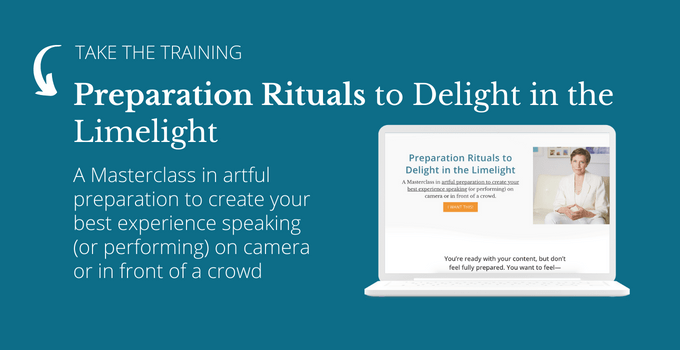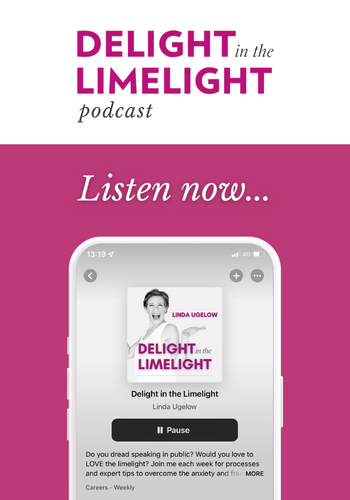When it comes to public speaking, one of the biggest mistakes you can make is not practicing your presentation enough beforehand.
It’s easy to fall into the trap of thinking that presentation practice is a tedious and boring task, but practicing your speech or presentation properly can elevate it by several levels. It can be the difference between a mediocre presentation and a gripping one.
And you know what?
With the methods I’m going to share with you in this post, preparing for a presentation can be a lot of fun.
6 ways to make presentation practice FUN! Share on X
How to practice for a presentation with intention
The whole point of the methods I’m about to teach you is to really get in there and understand what you’re saying.
Think back to high school. Do you remember when you had to read out loud in class and you obviously knew and understood the individual words you were saying but you didn’t take in what you were actually saying? Yeah, we don’t want that happening with your presentation!
 Of course you know your own material. But to be a truly engaging public speaker, you need to do more than just get the words out. You’ve got to feel them.
Of course you know your own material. But to be a truly engaging public speaker, you need to do more than just get the words out. You’ve got to feel them.
Just reading from a script or spouting words you’ve memorized is a recipe for a really boring presentation.
When you’re rehearsing your presentation, you should be intentional. Every time you practice your script, you should have a specific intention in mind.
This intentional practice is what separates an okay speaker from an amazing one. It helps you get familiar with your script, ensures you really know what you’re saying, and it’s a whole lot of fun!
6 intentional presentation practices
Here are some of the intentional approaches I use when I prepare for a presentation.
1. Read it out loud
The obvious first step!
When you read through your script out loud, you’ll start to notice where the phrasing doesn’t sound quite right or where you stumble.
Your script might look good on paper, but if it doesn’t sound like how you would naturally talk, you’ll need to tweak it a bit.
2. Feel each word
Try speaking the words of your script slowly and focusing on every vowel and consonant.
Make sure each word feels like it’s rolling off your tongue easily. If you keep tripping over a particular word or phrase, try saying it slowly and enunciating every single syllable.
By doing this, you’ll groove the vocal actions into your physical memory, so you don’t stumble over the words anymore.
It might feel a bit strange at first, but give it a try. You’ll be surprised at how much smoother your delivery becomes.
3. Get creative with your emphasis
We all have our own unique way of speaking and sometimes it’s hard to break out of those default habits. For example, you might be guilty of doing the “upspeak” thing where your sentences sound like a question instead of a statement (which is fine every now and then but if you’re doing it in every sentence, it becomes a bit repetitive and distracting).
Playing around with the way we say things adds flavor to our presentations. So do another read-through of your script, this time reading each sentence in a few different ways, emphasizing different words each time.
You might be surprised by how much of a difference this can make to the meaning and impact of what you’re saying.
4. Put on different voices
You know how when you read a children’s book, you put on different voices for the different characters? Do that with your script!
It sounds a bit wacky, but reading through your script using different voices and accents is a great way to make practicing fun and really get to know your material.
Of course, you don’t have to use any of these voices in your actual speech; this is just for your presentation practice!
5. Read your script as fast as you can
I learned this tip from Amy Port, the co-founder and president of Heroic Public Speaking.
The idea is to read your speech as quickly as you can while staying clear and expressive. This forces you to coordinate your mouth muscles and vocal cords, which helps you find the weak spots in your delivery.
You could also try reading your script r-e-a-l-l-l-l-l-y s-l-o-w-w-w-l-l-l-l-y. Or do some bits slowly and some bits quickly. Have fun with it!
6. Deliver your speech using a different medium
One of my favorite types of presentation practice is delivering my speech using a different medium. Instead of talking, try singing or rapping your script. You can also experiment with different styles like opera and rock!
Side note: here’s a video of me rapping!
For bonus points, dance as you speak or sing, letting the words inspire and inform your movements. This is a great way to really feel the meaning of your words and, of course, to have fun!

Get rehearsing!
This isn’t your typical list of ways to rehearse for a presentation! But I believe the more fun you have with your presentation practice, the more you’ll enjoy actually giving your presentation, and the more your audience will enjoy listening to you.
Going through your script with this intentional awareness will really help you explore the meaning, the words, and your own unique ways of expressing them.
One more thing… Preparation is not just about the words you say. You also want to put yourself in the right state of mind and readiness.
My free speaker preparation checklist will help you with this. Or you can take my Preparation Rituals masterclass.
Give these methods a go and see how much your presentations improve. Happy practicing!
What are your favorite ways to rehearse for a talk? Let me know in the comments.







0 Comments